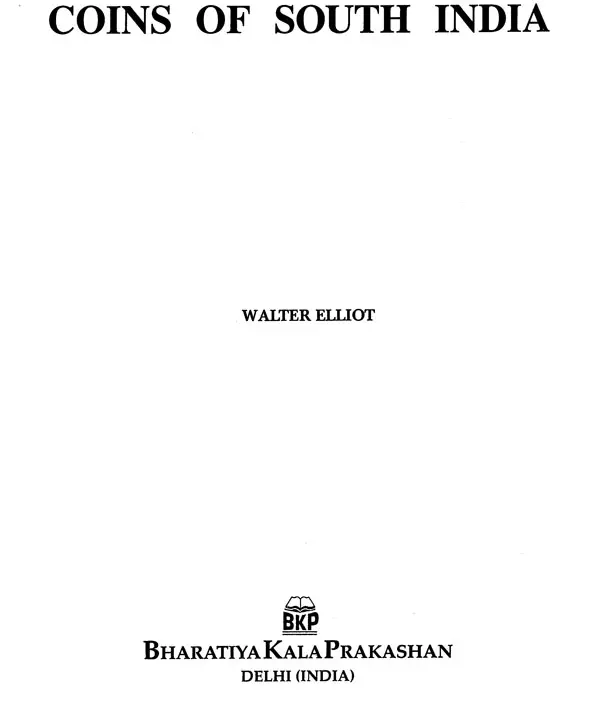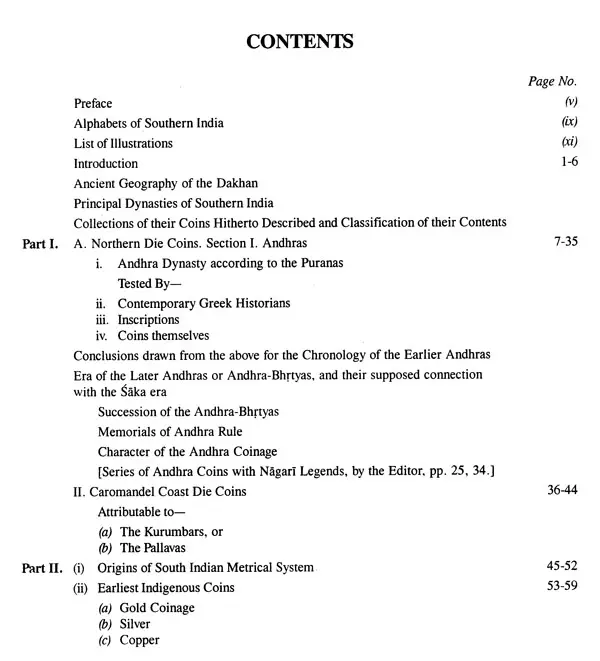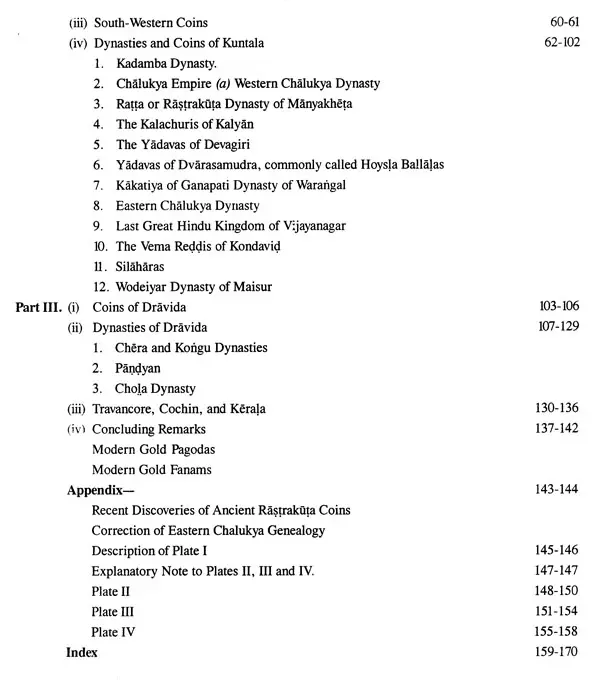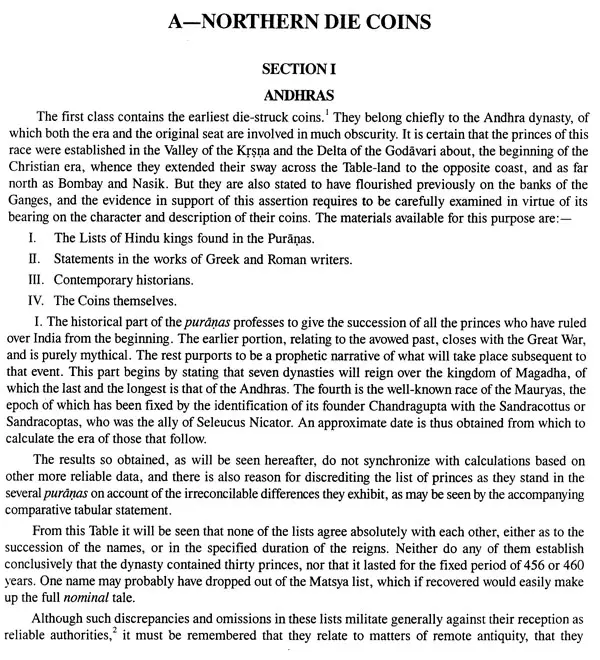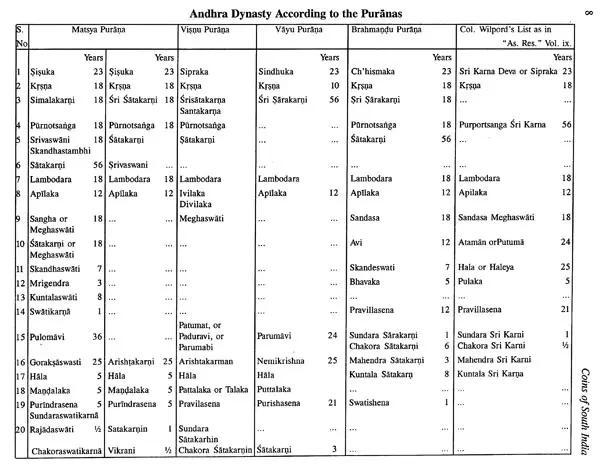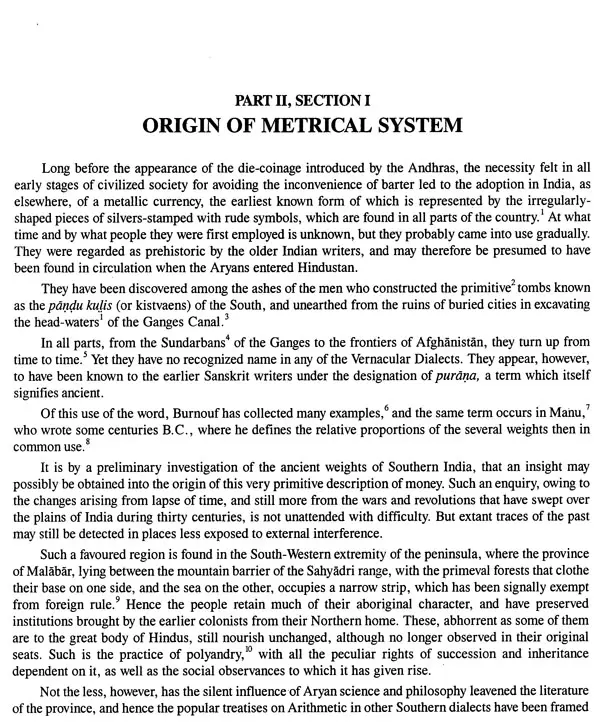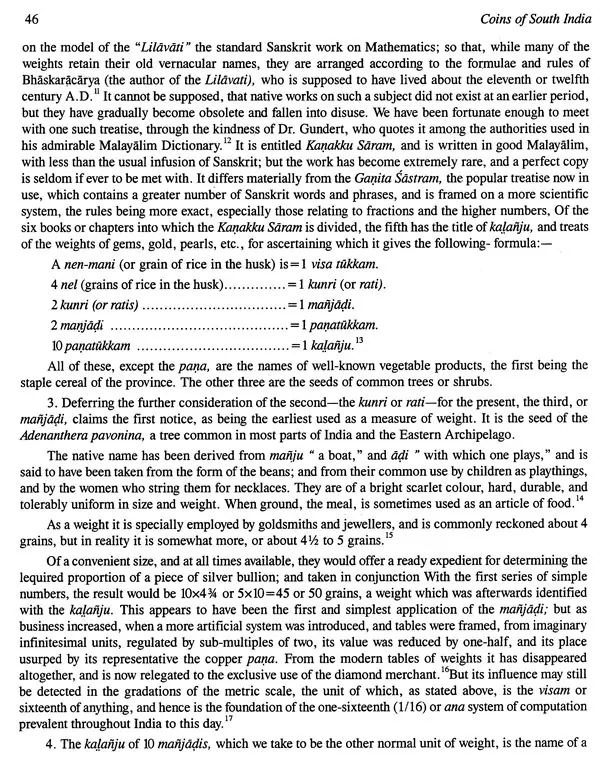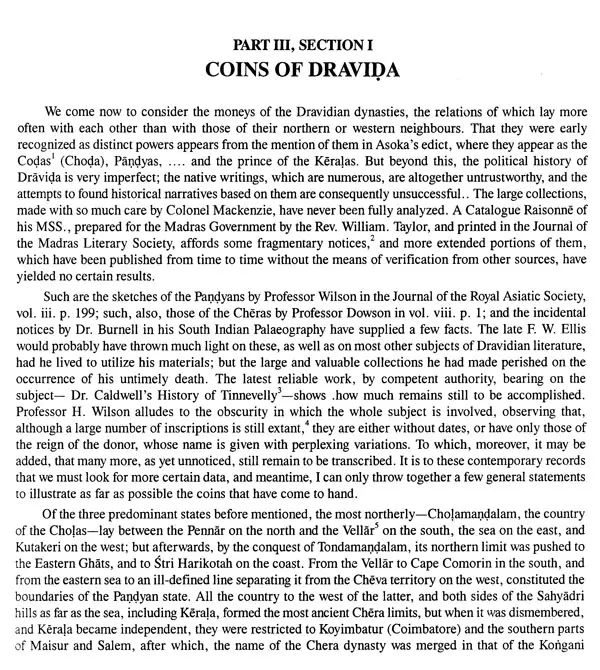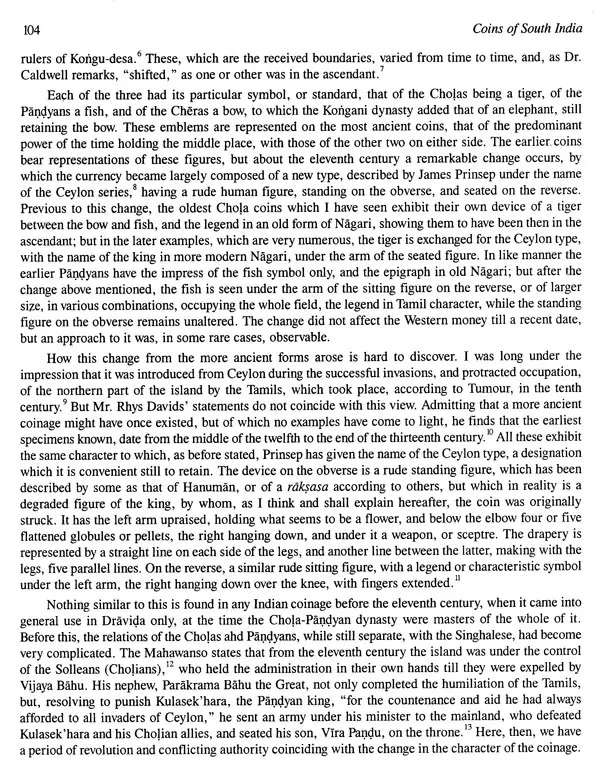
Coins of South India
Book Specification
| Item Code: | UAN454 |
| Author: | Walter Elliot |
| Publisher: | Bharatiya Kala Prakashan |
| Language: | English |
| Edition: | 2005 |
| ISBN: | 8180900843 |
| Pages: | 172 |
| Cover: | HARDCOVER |
| Other Details | 11.00 X 9.00 inch |
| Weight | 890 gm |
Book Description
In describing some of the coins here noticed, I had to trust chiefly to memory, which, notwithstanding the cheerful aid rendered by members of my own family, and by several friends, often left me in doubt and perplexity.
The plan I have followed in this essay has been to give a slight historical sketch of the principal southern rulers who issued dynastic coinages, as far as the limited means at my disposal would admit. Where the data for these were wanting or defective, I have indulged in greater detail, especially where the received history, such as it is, appeared to be inexact, or the chronology faulty or open to question. My speculations on these points may be amended and adjusted as the progress of the South Indian Archaeological Survey brings more comprehensive evidence to light.
The appearance of this contribution to the International Numismata Orientalia has been much delayed by the failure of my sight, which has latterly proved a serious hindrance in the revision of the press, and more especially so in the re-examination and description of the coins themselves.
The difficulty of correcting proofs by means of the ear alone must be obvious, and will suffice explain many of the typographical errors that would have been removed had the slips chanced to pass under my own eye.
In describing some of the coins here noticed, I had to trust chiefly to memory, which, notwithstanding the cheerful aid rendered by members of my own family, and by several friends, often left me in doubt and perplexity.
The plan I have followed in this essay has been to give a slight historical sketch of the principal southern rulers who issued dynastic coinages, as far as the limited means at my disposal would admit Where the data for these were wanting or defective, I have indulged in greater detail, especially where the received history, such as it is, appeared to be inexact, or the chronology faulty or open to question. My speculations on these points may be amended and adjusted as the progress of the South Indian Archaeological Survey brings more comprehensive evidence to light.
Residing in distant part of this country, I have had to depend for the leading faces, in a great measure, on my own library and on my own original collection of coins. Aided by these, it has been my aim merely to give such sketch of the monetary system of the Hindu principalities of the south, as will assist future numismatists to enter more fully into the coinage of the different dynasties. Hitherto specimens of earlier coins have rarely been met with, not because they were wanting but because when found as they are, in considerable number, they are at once converted into articles of modern use. When, however, the demand for them now manifested has given to them an extrinsic value, in excess of the market price of bullion, they will find their way more readily into the hands of collectors.
TIIE part of India to which the following Section of the International Numismata Orientalia refers is that lying to the south of the Narbada (Narmada) river, and the Vindhya Mountains, now known as the Dakhan, to distinguish it from Hindustan proper, a term which, in its restricted sense, is confined to Northern India. Between them lies an extensive tract of hill and forest, the Highlands of Central India, which forms not only a geographical, but also an ethnographical boundary, separating the Aryan from the Dravidian races. The latter, although not the first occupants of the land, preceded the Aryans. They appear to have arrived by successive immigrations from their Trans-Himalayan seats, driving out or enslaving the aboriginal inhabitants, and each new swarm pushing the preceding arrivals onwards until they settled into their several localities, where toy now form the Tamilian, Canarese, Telugu, and other communities. In the course of these displacements, some, unable to find a resting-place in the plains, betook themselves to the Highland region, where they have preserved their primitive character in feature, language, and manners, with little change.'
Before being restricted to their present limits, the Dravidians, as may be inferred from A scattered communities of their race still subsisting in the Sub-Himalayan region, the Rajmahal Hills, etc., appear to have been spread over Northern India, whence they were ejected by another race of intruders from the north-west. The Aryans, after establishing themselves in the Punjab, eventually became the predominant power in the Gangetic valley, but they do not appear to have crossed the Vindhyan barrier in force, or to have gained a permanent footing in the Dakhan.' This did not hinder them from maintaining a friendly intercourse with their southern neighbours.
**Contents and Sample Pages**
